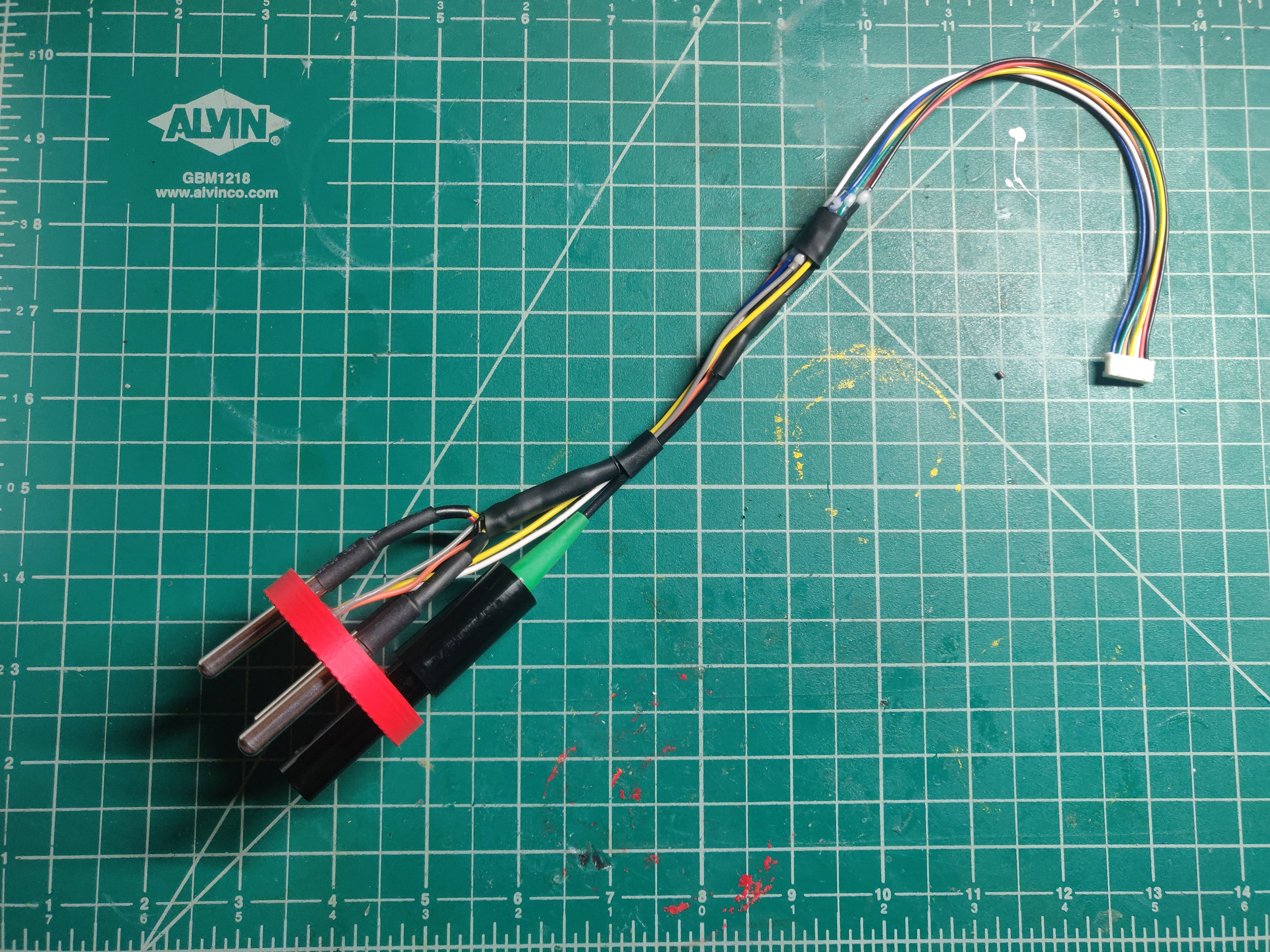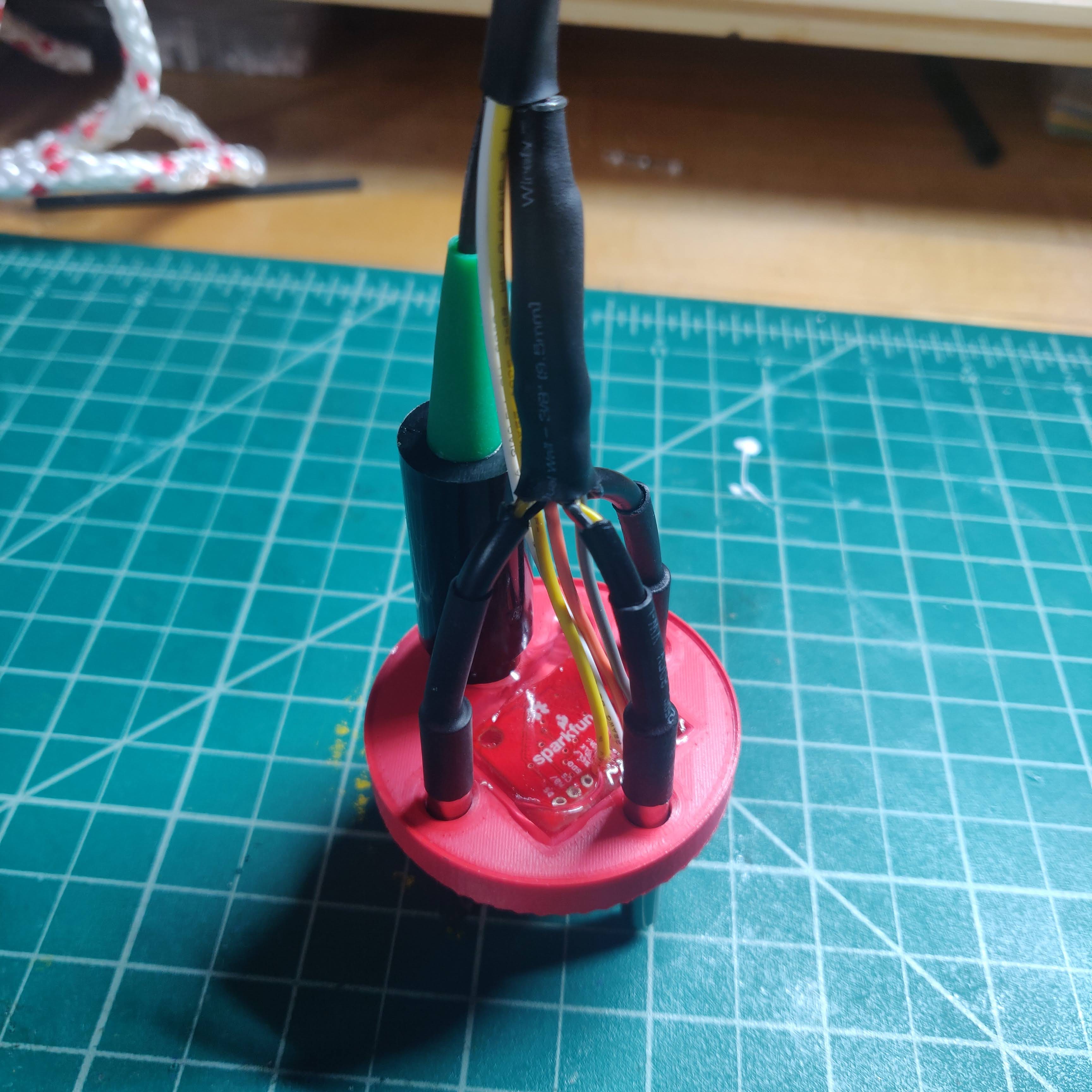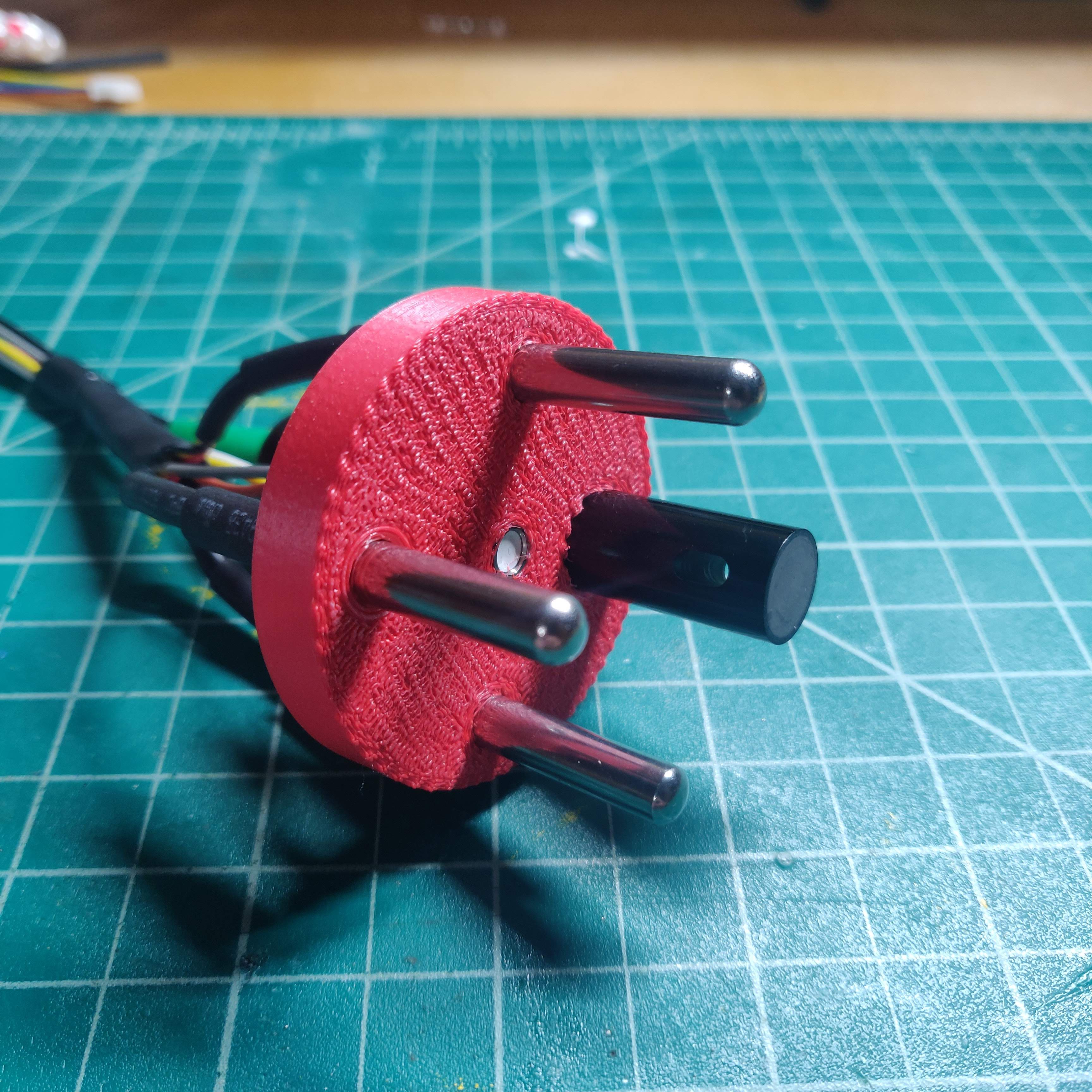
One of the trickiest parts of assembling the OpenCTD is wiring up all the sensors. After several iterations, I've settled on a design that is fairly streamlined, minimizes potential failure points, and uses waterproofing heat shrink to seal each connector.
One of the cool things that we've seen in the field is that, when the OpenCTD does flood (when you throw something in the ocean, the ocean tends to throw it right back at you), the sensors almost always survived undamaged. Which is nice, since they're the most expensive component in the device.

The sensor packet presents and interesting challenge for the OpenCTD Kit, though. Building it is both very rewarding, but also fairly high risk. And without the full packet wired up, I can't QA/QC all the components. Which means, for students, this step is perhaps the most frustrating, and the most likely to fail.
In pilot workshops, I've tested a few different options. Sometimes I build the sensor packet, and the students build everything else. I've tried building most of the sensor packet and the students get to wire up the connector, which I think most can tell is just busy work. Or I give them the raw components and let the dice lie where they fall.

But workshops have an advantage in that I'm there to supervise. I can catch problems before they become unfixable. A student kit needs to work without an experienced instructor nearby.
What I've settled on, at the moment, is making both raw and finished sensor packages available, and let the user decide.
 andrew.david.thaler
andrew.david.thaler
Discussions
Become a Hackaday.io Member
Create an account to leave a comment. Already have an account? Log In.